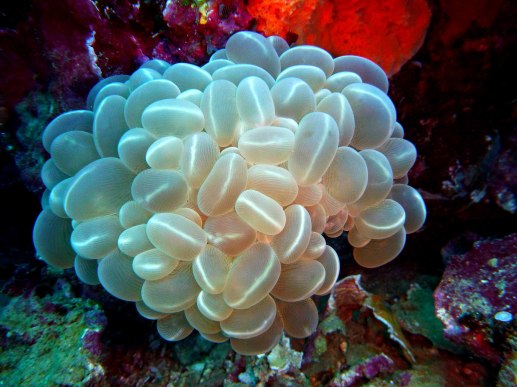
After discovering over a year ago that Legazpi has diving opportunities, I was back to explore Albay Gulf. It is not really known for scuba diving, I just thought it isn’t much exploited and it would be less crowded and I would have enough time taking it slow, down in the depths. Craning my neck looking for Mt. Mayon as my plane prepared for arrival, she was hidden by clouds even as we touched down. Seeing her countenance everyday was another inspiration for my three-day get away. I was noting mentally my to do’s for the day as I headed for my new house at Mayon Backpackers, located perfectly in the downtown area bit far from the dive shop. But going around the city all by myself was just as interesting as discovering one new place, surface or in the depths.
Morning Delights
My diveshop was too kind to arrange for my pick-up and being early had given me enough time to take it slow as I wait for my companions. Indeed, it wasn’t congested there were only two of us as their guests, I was joined to a 67 year old Japanese who just earned his certification few months back. Taking it slow as I wish!

We cruised shortly to our first descent, DM Almar briefly introduce the site which they called as Itom na Buya (Black Bouy) which I presumed originally marked with black bouys. Mr. Jin Masuda of Pacific Blue have mentioned that restoration of the bay is on-going but it was surprising that the area was colorful and was filled with variety of corals including wide sea fans in different hues. Although the fishes were juveniles but it wasn’t totally devoid of marine life and it looks healthy. There were bubble corals, branching corals, rubber corals, whips, ferns, and feather stars. There were occasional juvenile nudis, and we found a shrimp lurking on the coral. We ascend after 47 minutes with air at 80 bars, my deepest was 25 meters.

Our second descent was in Pasig Out (there must be Pasig In!), a sandy slope which is not really far from dive shop shores. Our first sighting was a tombstone of diver who lost his life in accident while diving many years ago. It still standing there now covered with fossilized parasites. For sure, diving in Albay wasn’t something new and maybe the diver or the accident has been forgotten buried from lapse of time . Corals also abound in the area – bubbles, rubber, staghorns, spirals, seafans, whips, squirts and even crown of thorns. Although there was an area of coral rubbles the reviving and flourishing marine life is imminent. Juvenile fishes are contently hovering over corals! At noon, the waters went choppy already, not wanting to stay on the surface longer I carry my tank on my own. We ascend after 40 minutes with air still at 100 bars, my deepest at 22 meters.

The view was perfectly glorious, my ascents and descents were decorated with the view of Mt. Mayon, watching her from the waters in a different angle was a unique experience! It was a great morning for our descents and my afternoon was more interesting. I had a long interval for my third dive which deserves another write-up. Taking it slow, you know! 🙂








You must be logged in to post a comment.